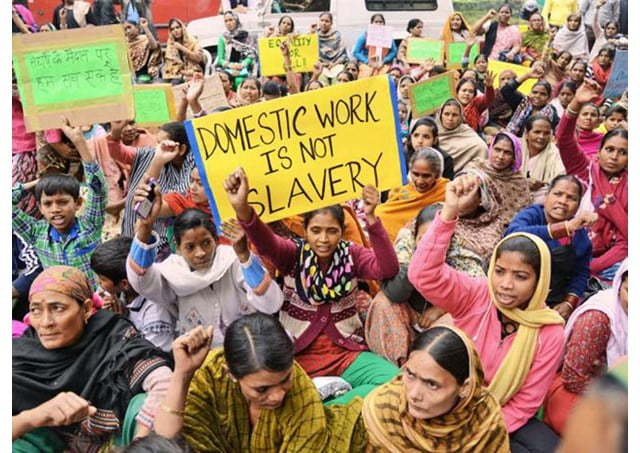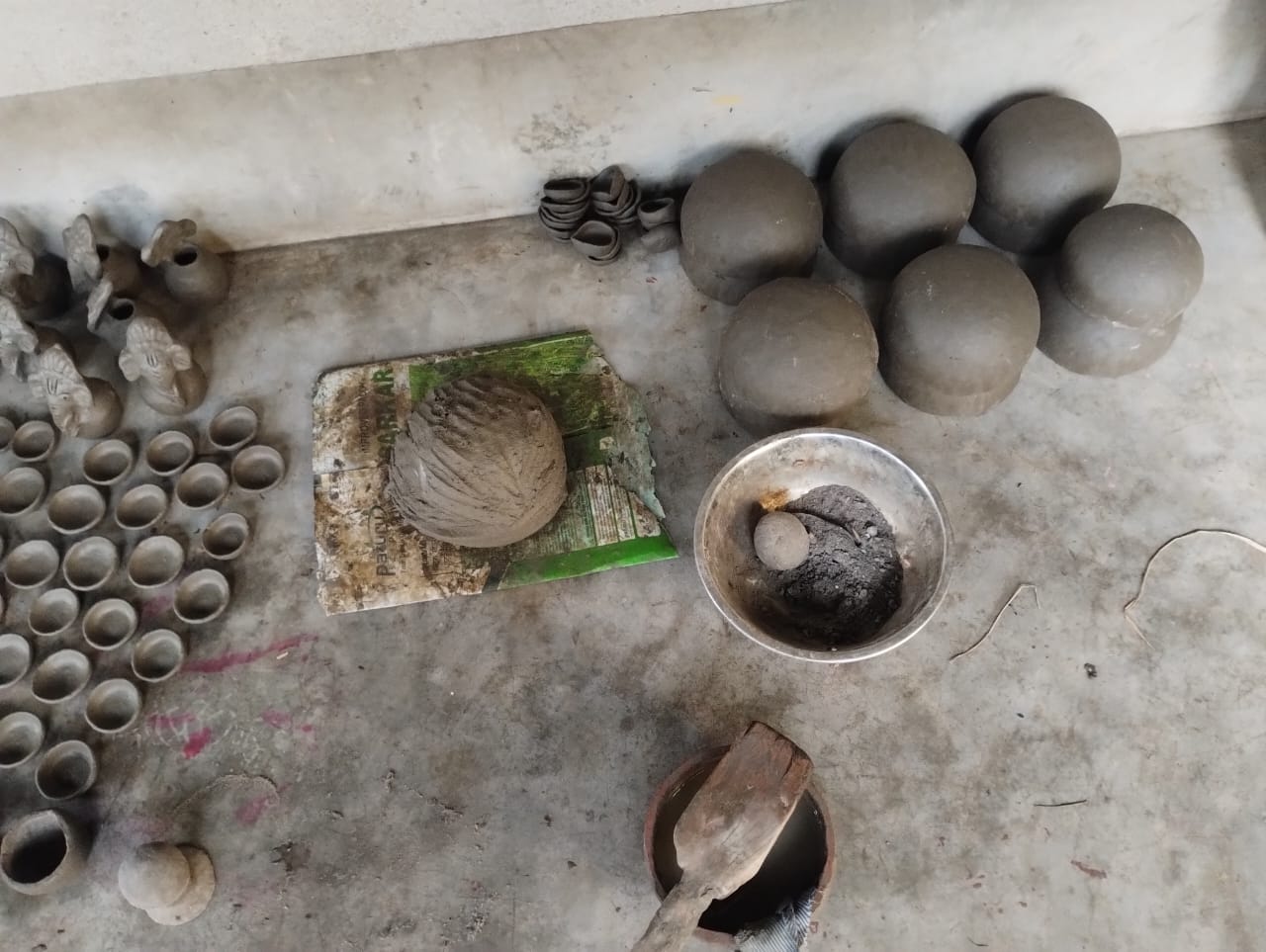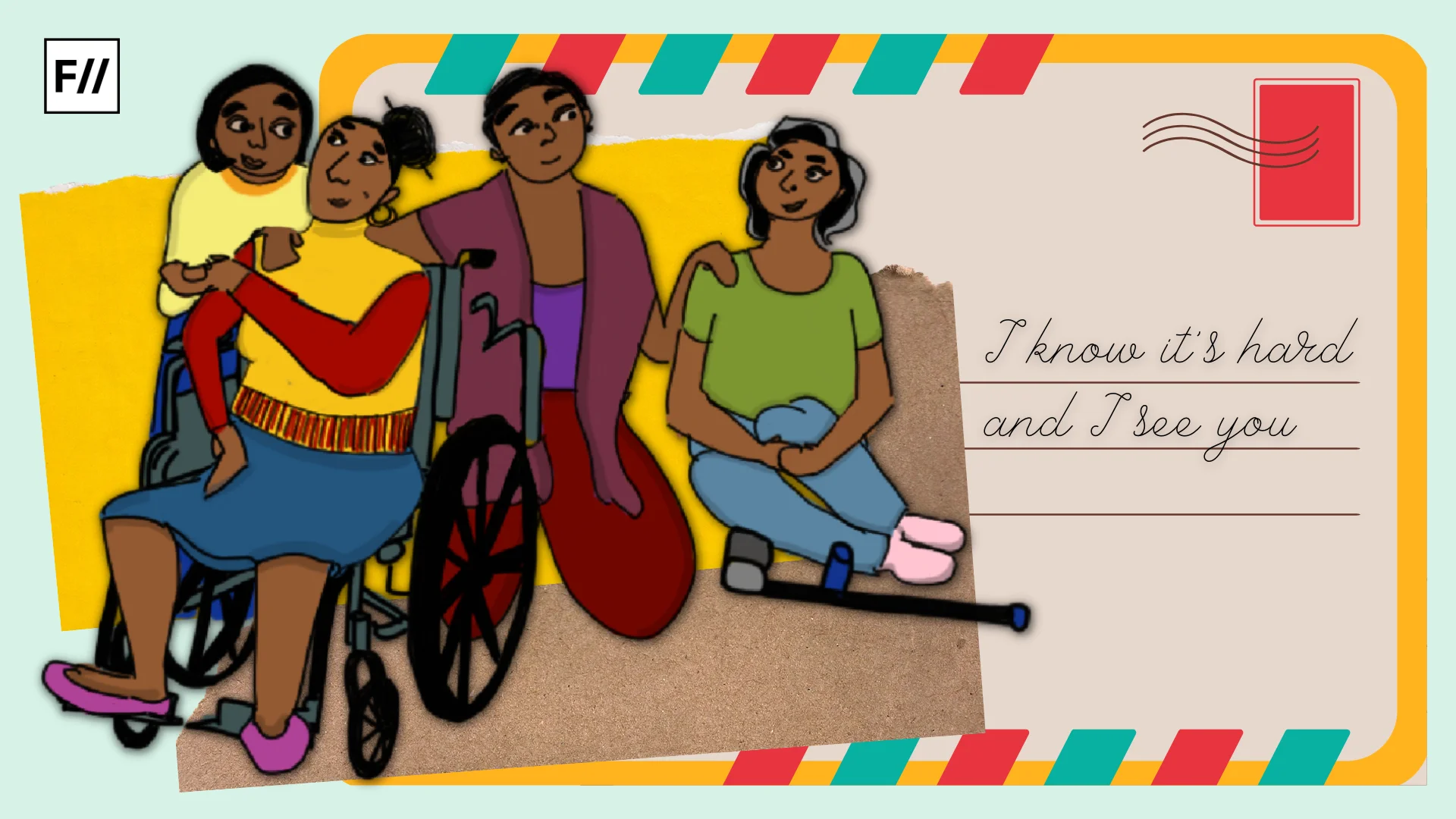No work is insignificant. All labour that uplifts humanity has dignity
MARTIN LUTHER KING JR.
Domestic workers are called by many different names, rarely any of them associated with undertones of respect, dignity or even the bare minimum courtesy one must accord to a fellow human being. We allow them in the precincts of our homes, and they can clean our utensils and toilets but must never use them – an attitude that symbolises our notions of classism, casteism and purity. While these domestic workers form the cornerstone of the economy by providing accessible and readily available labour, their needs rarely find way into legislation rooms or policy tables. They are the worst hit in moments of crisis, and are left to fend for themselves. The Covid-19 pandemic and its context of the never ending lockdowns has only gone on to highlight the vulnerabilities of domestic labourers and the need for targeted welfare programmes to support them.
Domestic Workers: Devalued and disempowered in isolated workspaces
According to the International Labor Organisation (ILO), domestic work refers to work carried out within the domestic space such as sweeping, cleaning utensils, washing clothes, cooking, caring for children, and the like, by an individual for an employer in return for remuneration.
Solidarity networks and unionisation opportunities available to workers in other workspaces, from factories to firms, are absent for domestic workers. They are therefore atomised, isolated and individuated within the domains of their respective workplaces, making them even more prone to unfair treatment
Official statistics place the number of domestic workers in India at 4.75 million, of which about 3 million are women. However, the ILO sees this as a gross underestimation of data and places the valid number between 20 million to 80 million. Women in Informal Employment: Globalising and Organising (WEIGO), a global network focused on securing livelihoods for the working poor, especially women, concurs that 4.75 million is a gross under-estimation and 80 million might be stretching it too far. It places its estimates at 50 million domestic workers. Either ways, we have a substantially large population of domestic workers, with limited policy legislation made for them. Antislavery Organisation, one of the oldest international human rights organisations in the world noted that domestic workers are seen as “informal help”, thereby devaluing their labour and leaving them to suffer in poor working conditions, exploitation, abuse and slavery. Most of these workers are Dalits or come from other disadvantaged castes and tribal minorities. Many are landless, illiterate and innumerate, which increases their vulnerability and disempowerment.
A nexus of “recruiting agencies”, police personnel and either unaware or exploitative employers normalise underpayment, assault and hazardous work environments that domestic workers are forced to endure. Most of them are unable to escape this labyrinth, either out of necessity or prolonged helplessness. Solidarity networks and unionisation opportunities available to workers in other workspaces, from factories to firms, are absent for domestic workers. They are therefore atomised, isolated and individuated within the domains of their respective workplaces, making them even more prone to unfair treatment.
Also read: Is Commercialisation A Boon Or A Bane For Domestic Workers?
Domestic work in the pandemic: Prejudice, poverty and exploitation
The human distress of our domestic workers may not come through via statistical data. But their woes are hard hitting and real. One could maybe pause and hear from some of them to truly gauge what Covid-19 has meant for them.
Pratima, a domestic worker, has been working as a cook in Delhi. While the lockdown initially robbed her off her income, she found some relief after the regulations were eased. But her struggle is far from over. Pratima is back to work and a gaze of suspicion has replaced the erstwhile warmth. She is now seen as a potential carrier of the virus by her employers. She is sprayed with disinfectant all over before being allowed to enter the house. She doesn’t like it, and her skin itches all the time but if she wants to feed her family, this is her only alternative.
The formal economy runs on underground, informal, atomised economies that are based on exploitative labour practices. Domestic workers are the most essential workforce of our economy because it is their underpaid and over-exploited labour that allows so many working men and women to continue their professional lives
Kavita, 32, said, “Many people have removed me from work because of Covid. No one paid us salary, and or offered us any help through the period. I managed to get through based on my savings. Still, many of my friends had to go back to their villages amidst the pandemic because they were left to fend for themselves. The government also offered no help.”
Rajni*, 35, mother of three, migrated to a city from Samastipur, Bihar, around ten years back. Rajni’s monthly income is 2500 rupees, of which 1500 is spent on rent. She is the sole earning member of her family. Upon being asked how her employees have responded during the pandemic, she said, “No one here gives even 10 rupees of assistance, so who would give any salary. We managed to get through on whatever little savings we had.”
Radha*, another domestic worker from Gurgaon, concurs. However, she attests that since her husband is also an earning member, she still had a safety net to ride the non-payment of salary during the lockdown.
ILO notes that a significant number of domestic workers are women. A substantial number of these women migrate from Jharkhand, Bihar, Bengal and Orissa to bigger cities. Most of them hail from vulnerable communities, underprivileged castes or ethnic minorities – factors that combine to make them susceptible to exploitation.

Mahesh Vyas, managing director and CEO of the Centre for Monitoring Indian Economy, whose Consumer Pyramids Household Survey has collected weekly data at a national level since January 2016, from close to 175,000 households, notes that women pay the highest price during any significant economic shock. He said that in the aftermath of demonetisation, 2.4 million women lost jobs as opposed to 0.9 million men.
Similarly, the IWWAGE Report, 2019, highlighted the failure of “official macro data to delineate the scope, scale and patterns of female labour migration” and thus incorporate a gendered approach to development with respect to internal migration. Indu Agnihotri of Centre for Women’s Development Studies (CWDS) and Asha Hans, founding director, School of Women’s Studies, Utkal University, Bhubaneswar, note in their upcoming book that “Emerging trends underline how the convergence of poverty, gender and marginalisation has played out during the pandemic, to render women, and specific categories amongst them, especially vulnerable.”
The formal economy runs on underground, informal, atomised economies that are based on exploitative labour practices. Domestic workers are the most essential workforce of our economy because it is their underpaid and over-exploited labour that allows so many working men and women to continue their professional lives. In a world where cheaply available labour does not clean our homes, cook our meals and do our laundry, most of us would’ve struggled to have a functioning professional life.
Also read: COVID-19 Lockdown: Domestic Workers And A Class-Caste Divide
Policy changes, attitudinal shift: The way ahead for dignity of domestic workers
To effectively address the concerns of domestic workers, changes are required to happen at two levels – one is a massive attitudinal change that must begin with an internalisation of the dignity of labour. Perhaps, it must begin with you and me, with none of us privileged individuals shirking off domestic chores because we feel that their performance is incongruent and antithetical to our class identities.
The second level of change is needed at the policy level by bridging the existing lacuna through a joint dialogue with the various stakeholders.
The lockdowns, where most of us were forced to function without domestic help has definitely prompted at least some of us to understand the importance of domestic workers. We must take these lessons in the dignity of labour to our friends, family and government to ensure that there is true dignity in work for everyone, not just the privileged
While the inclusion of domestic workers within the ambit of The Unorganised Workers’ Social Security Act (2008) and the Sexual Harassment of Women at Workplace (Prevention, Prohibition and Redressal) Act (2013) are welcome steps, even after these measures coupled with the extension of the Rashtriya Swasthya Bima Yojana (RSBY) to cover domestic workers and the notification of Minimum Wages by a few State governments; there is still a huge lacuna in policies.
One primary concern plaguing the domestic work arena is the employment of children. Decent Work For Domestic Workers 2017 that complies good labour practices could show us the way ahead. Bihar’s National Domestic Workers Movement (NDWM), among its many goals, envisioned bringing down child labour usage through non-formal education centres, anti-trafficking and safe migration training in source areas of migration; shelter-home rescue and rehabilitation, awareness and sensitivity training for parents, community mobilisation, child peer group participation, skills training for school dropouts and the like. The results speak for themselves. Between 2006 and 2015, about 700 child domestic workers and school dropouts benefited from the NDWM programme and entered formal schooling. Parents in and around 130 urban slums and villages became aware of children’s rights and a marked change became apparent in their thought process, evidenced by the fact that in some areas, every child was being sent to school.
Similarly, many problems are a product of juristic and legal hurdles as domestic work is often placed outside the definitions of the “workman”, “employer”, or “establishment” as defined under labour laws. WIEGO recommends amendments to The Minimum Wages Act, 1948; The Maternity Benefit Act, 1961; Workmen’s Compensation Act, 1923; Inter-State Migrant Workers Act, 1979; Payment of Wages Act, 1936; Equal Remuneration Act, 1976; Employee’s State Insurance Act, 1948; Employees Provident Fund Act, 1952; and the Payment of Gratuity Act, 1972 to carve a more integrated approach to the protection of domestic workers’ rights.

Two other global practices that can create a safe working environment and increase employability of domestic workers include the Rap Model of Indonesia and Hong Kong’s Confederation of Trade Unions Training Centre (CTUTC). The Rap Model of Indonesia shows the power of collectivisation and communication among workers. Such a network allows to form bonds of solidarity and provides spaces of resilience and sharing of lived experiences. Hong Kong’s CTUTC emerged as an alternative to exploitative and coercive practices of agencies. CTUTC trains domestic workers, and through a district-level skill-matching programme, places them in appropriate workspaces. It has been able to conjure employer trust due to the skilled repository of staff and the absence of agency fees. CTUTC is an organisational effort by domestic workers, for domestic workers.
The government must encourage the diffusion of these practices by providing an adequate line of credits. It must also tap into mobilising funds via Corporate Social Responsibility initiatives. Similarly, non-profit organisations must create forums for such engagements because very often, these organisations are better placed to develop communication, interaction, and bonding spaces given their grassroots interactions with domestic workers.
While these are some longitudinal plans of action, as we reel under the impact of the second wave of the pandemic, many domestic workers are reliving the nightmare of the first wave. Governments must step up and provide financial and material relief to them. While this is a band-aid solution, it could also initiate investigations into the total number of domestic workers pan-India and bring out other relevant demographic details. This is essential data that could provide us with a better picture about domestic workers.
Similarly, many of us as employers must act as we perhaps expect our firms to act towards us—by reaching out and checking up on those under our employment, and paying them their due instead of cutting it down.
The lockdowns, where most of us were forced to function without domestic help has definitely prompted at least some of us to understand the importance of domestic workers. We must take these lessons in the dignity of labour to our friends, family and government to ensure that there is true dignity in work for everyone, not just the privileged.
*names have been changed to protect privacy
About the author(s)
Harshita is a public policy consultant working at the intersection of gender, climate change, and disability. An alumna of Jesus and Mary College, University of Delhi, and the Institute of Development Studies, University of Sussex, her work draws on her training in History and Development Studies to unpack gender as a social and structural construct.




